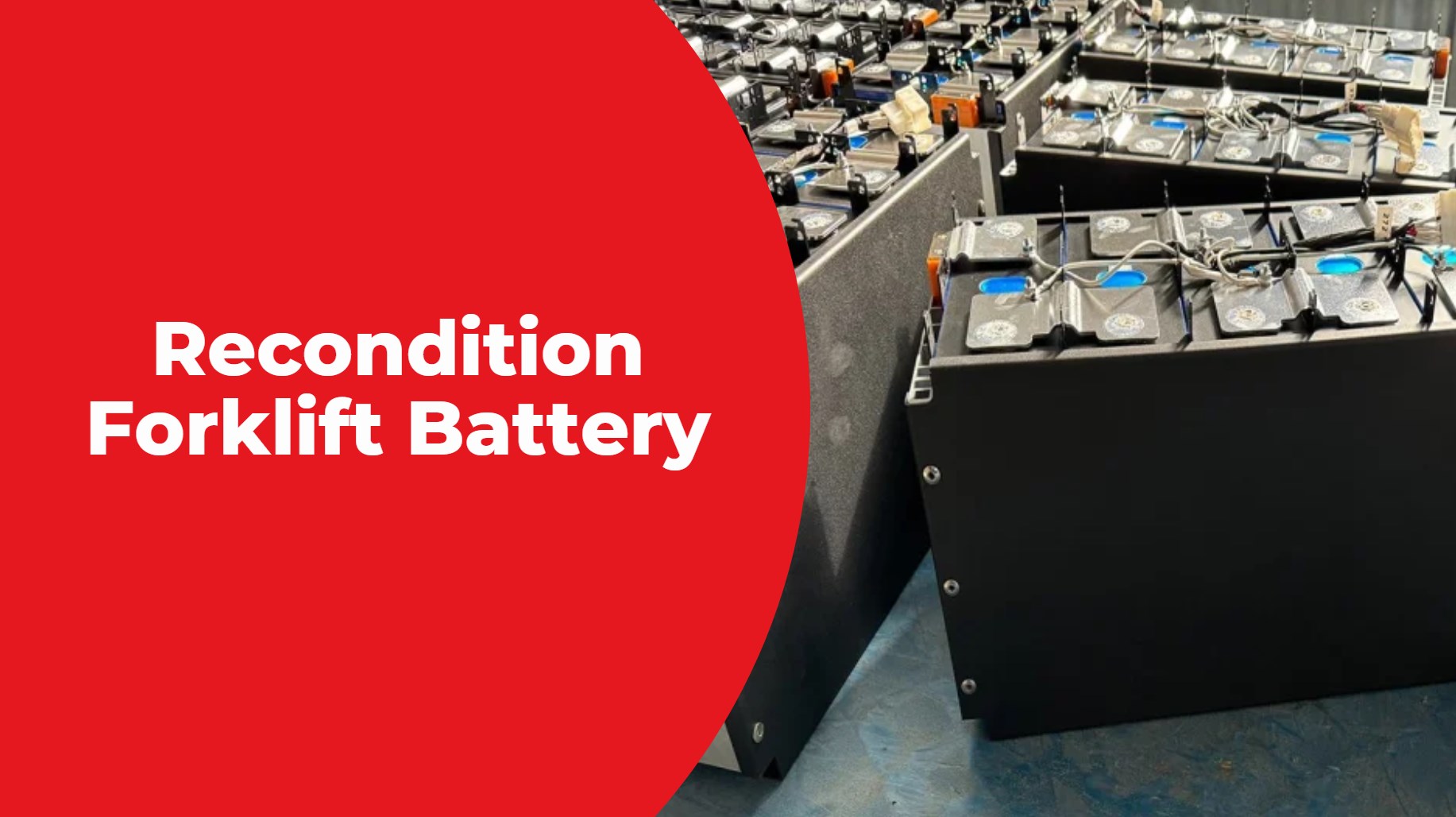Reconditioning forklift batteries is an effective method to restore used batteries to a functional state, extending their lifespan and enhancing their performance. This process involves several steps aimed at rejuvenating the battery, offering significant benefits in terms of cost savings, environmental impact, and performance. In this article, we delve into the reconditioning process, its advantages, and essential considerations to help businesses make informed decisions.
Reconditioning forklift batteries involves restoring their capacity through equalization charges or replacing damaged cells. This process can extend battery life significantly while reducing waste. Regular maintenance is key to ensuring optimal performance post-reconditioning.
The Reconditioning Process
- AssessmentThe reconditioning process begins with a thorough assessment of the forklift battery’s condition. This includes measuring the battery’s voltage, capacity, and overall health of the individual cells. By evaluating these parameters, technicians can determine the extent of degradation and identify any components that require attention.
- CleaningCleaning is a crucial step in the reconditioning process. The battery terminals and casing are cleaned to remove corrosion, dirt, and debris. This is essential for maintaining good electrical connections and ensuring that the battery operates efficiently. Proper cleaning can prevent potential issues and enhance the battery’s overall performance.
- TestingFollowing the cleaning, each cell within the battery is tested for voltage and capacity. This step helps identify weak or failing cells that might compromise the battery’s performance. Accurate testing allows for targeted intervention, ensuring that only the necessary components are replaced or repaired.
- Cell ReplacementIf testing reveals defective or significantly degraded cells, these cells are replaced with new or refurbished ones. This step is vital for restoring the battery’s overall capacity and functionality. By replacing faulty cells, the battery’s performance can be significantly improved, leading to better reliability and efficiency.
- BalancingBalancing involves adjusting the cells to ensure they charge and discharge evenly. This step helps to optimize the battery’s efficiency and longevity. Properly balanced cells contribute to a more stable and reliable power output, enhancing the overall performance of the forklift.
- RechargingAfter reconditioning, the battery is fully recharged using a compatible charger. This may involve a specialized charging process designed to optimize the battery’s performance. A complete recharge ensures that the battery is ready for use and capable of delivering the necessary power for forklift operations.
- Final TestingThe final step in the reconditioning process is testing the battery once more to ensure it meets the required specifications and performance standards. This final check confirms that the reconditioning process has been successful and that the battery is ready for operational use.
Benefits of Reconditioning Forklift Batteries
- Cost SavingsReconditioned batteries are generally much cheaper than new batteries, providing a cost-effective solution for businesses. By opting for reconditioning, companies can extend the life of their equipment without the expense of purchasing new batteries.
- Extended LifespanProperly reconditioned batteries can retain a significant portion of their capacity, often around 85% or more. This extended lifespan effectively gives the battery a second life, allowing businesses to maximize their investment and avoid frequent replacements.
- Environmental ImpactReconditioning batteries reduces waste and minimizes the environmental impact associated with battery disposal and the manufacturing of new batteries. By reconditioning, businesses contribute to more sustainable practices and reduce their carbon footprint.
- Improved PerformanceReconditioning can restore the battery’s performance, making it more efficient and reliable for ongoing operations. Improved performance translates to better productivity and reduced downtime, enhancing overall operational efficiency.
Considerations
- WarrantyMany reconditioned batteries come with a warranty, providing assurance regarding their performance and reliability. It’s important to review the warranty terms and conditions to ensure adequate coverage and support.
- Professional ServicesUtilizing professional reconditioning services is advisable to ensure that the process is carried out correctly and safely. Experienced technicians have the expertise and equipment needed to perform effective reconditioning and address any potential issues.
- CompatibilityEnsure that the reconditioned battery is compatible with your specific forklift model and meets the required specifications. Compatibility is crucial for optimal performance and to avoid potential operational issues.
- Regular MaintenanceEven after reconditioning, regular maintenance is essential to maximize the battery’s lifespan and performance. Routine checks and maintenance can help identify any issues early and ensure the battery continues to operate efficiently.
Conclusion
Reconditioning forklift batteries offers a practical and economical solution for businesses seeking to extend the life of their battery-powered equipment. By restoring the battery’s performance and capacity, companies can achieve cost savings, contribute to sustainable practices, and enhance operational efficiency. With proper assessment, cleaning, testing, and maintenance, reconditioned batteries can provide reliable power and improved performance for various industrial applications.
FAQs
Forklift Battery Pack: A Comprehensive Guide
Recondition Forklift Battery: A Comprehensive Guide
Reconditioned Forklift Battery: An Economical and Eco-Friendly Solution
Used Forklift Battery: A Comprehensive Guide
Lithium Forklift Batteries: The Future of Material Handling
The Future of Electric Forklift Batteries: Innovations and Trends
Understanding 24V Forklift Batteries: A Comprehensive Guide
36 Volt Forklift Battery: A Comprehensive Overview
Understanding 12V Forklift Batteries: A Comprehensive Guide
A Comprehensive Guide to Forklift Batteries: Types, Advantages, and Considerations
Understanding the Types of Forklift Batteries: A Comprehensive Guide




